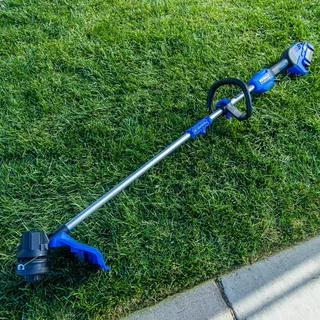A string trimmer, also known as a weed eater or weed whacker, is an essential tool for maintaining a clean and tidy yard. Whether you’re dealing with overgrown grass along your fence line or weeds around trees and flower beds, a string trimmer gets into places a lawn mower can’t reach. However, using this tool requires proper technique and safety precautions. That’s why we’ve created The Ultimate Beginner’s Guide to Using a String Trimmer Safely — to help you get the job done right while keeping yourself and others out of harm’s way.
Why Safety Matters When Using a String Trimmer
String trimmers might look easy to use, but they spin at high speeds and can throw debris like rocks and sticks at dangerous velocities. Improper use can lead to personal injury or property damage. Understanding the basics of string trimmer safety is the first step in responsible yard maintenance.
Before You Begin: Gear and Preparation
1. Wear the Right Protective Gear
Before you even start your trimmer, make sure you’re wearing:
- Safety goggles or a face shield – to protect your eyes from flying debris.
- Long pants and sturdy shoes – to shield your legs and feet.
- Gloves – to get a better grip and reduce vibration.
- Ear protection – especially for gas-powered models, which can be very loud.
2. Inspect Your Equipment
Check the string trimmer for any signs of wear, damage, or loose parts. Make sure the guard is intact and properly positioned. If you’re using a gas-powered trimmer, ensure the fuel is fresh and there are no leaks.
Getting Started: Using the Trimmer
1. Hold It Correctly
Use both hands for control — one on the trigger handle and the other on the support handle. Keep a firm grip and maintain a balanced stance.
2. Watch Your Surroundings
Make sure pets, kids, and other people are at least 50 feet away. Be mindful of windows, cars, and other breakable objects.
3. Trim with a Smooth Motion
Use a gentle sweeping motion, keeping the string level with the ground. Avoid digging into the soil — this wears down your string faster and could send debris flying.
Common Mistakes to Avoid
In The Ultimate Beginner’s Guide to Using a String Trimmer Safely, one key focus is helping you avoid rookie errors that can lead to injury or equipment damage. Here are a few:
- Overreaching – Always keep the trimmer close to your body for better control.
- Trimming when wet – Wet grass can clog your trimmer and increase the risk of slipping.
- Ignoring maintenance – Keep your trimmer clean and replace the string as needed.
Maintenance Tips for Long-Term Safety
- Clean the trimmer after each use.
- Check and replace worn trimmer line.
- Store it in a dry, safe location.
- Regularly inspect for any loose screws or damaged guards.
Maintaining your tool is just as important as using it correctly. A well-maintained trimmer is not only more efficient but also much safer.
Final Thoughts
Whether you’re tackling a small yard or a larger landscape, safety should always be your top priority. The Ultimate Beginner’s Guide to Using a String Trimmer Safely aims to give you the confidence and knowledge to handle your trimmer like a pro. With the right preparation, protective gear, and techniques, you’ll keep your yard looking sharp — and yourself out of danger.
So before you fire up that string trimmer, review these tips and keep them in mind. You’ll thank yourself later!


